A public installation, an observatory, a structure inspired by ancient wind towers, a reusable scaffolding system which invites us to explore the history of the city through spatial transformations. Time Transitions by RUÍNA Architecture, is an installation “still in (and constantly in) construction” located at the entrance of an old Market in Sharjah, United Arab Emirates created for Sharjah Architecture Triennial, “Beauty of Impermanence: An Architecture of Adaptability”.
Time Transitions is a public installation developed for the second edition of the Sharjah Architecture Triennial, “Beauty of Impermanence: An Architecture of Adaptability,” curated by architect Tosin Oshinowo.
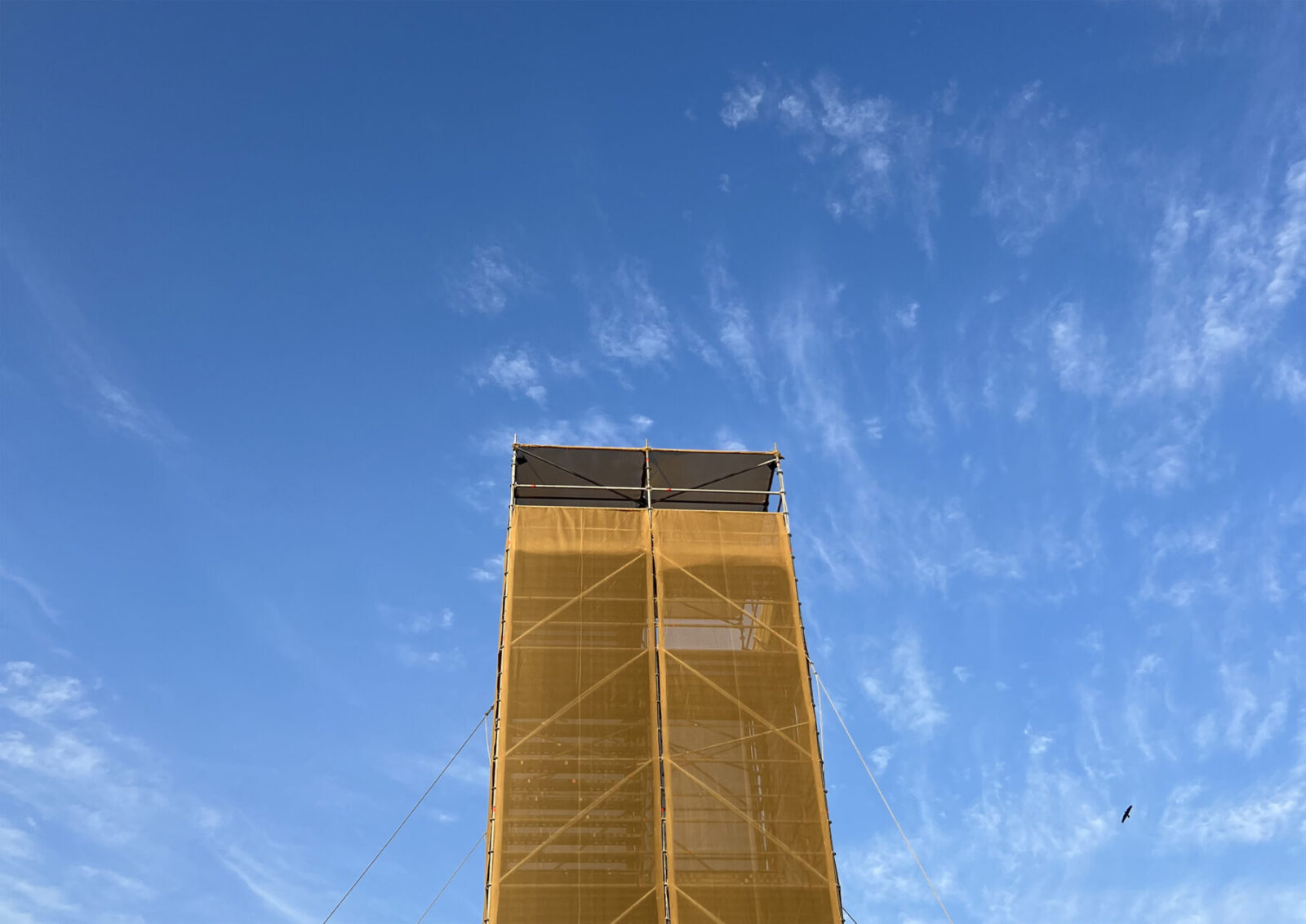
Located at the entrance of the old Al Jubail Vegetable Market in Sharjah, United Arab Emirates, the 18-meter-high installation serves as an observatory to restore the view from the old market to the waterfront.
Despite being considered a specimen of modern architecture in Sharjah, the old market, built in 1980, was deactivated and faced imminent demolition. The construction of its successor on the opposite side of the street involved a significant intervention, including the landfilling of part of the waterfront and the consequent distancing from its decades-old predecessor.
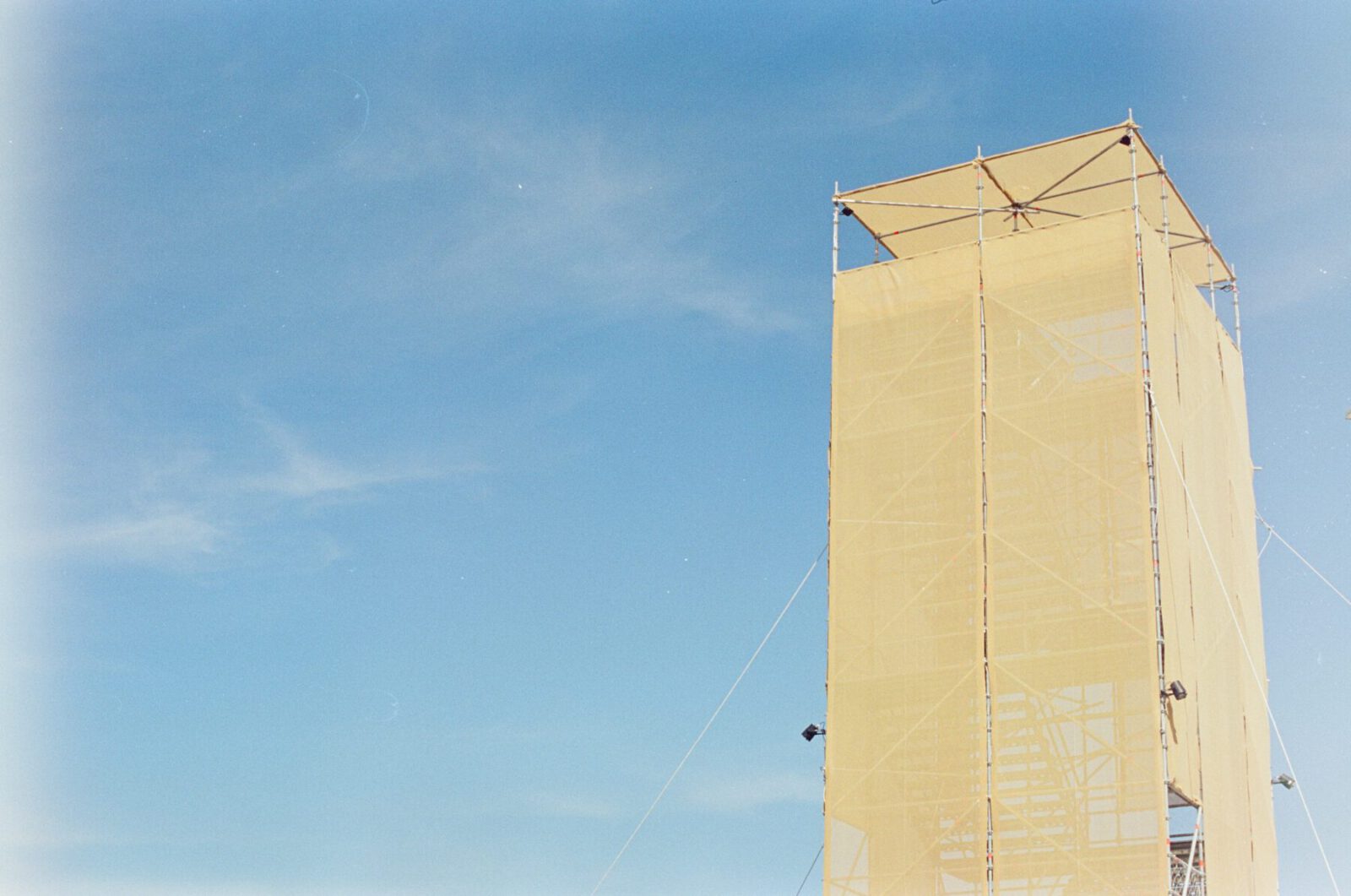
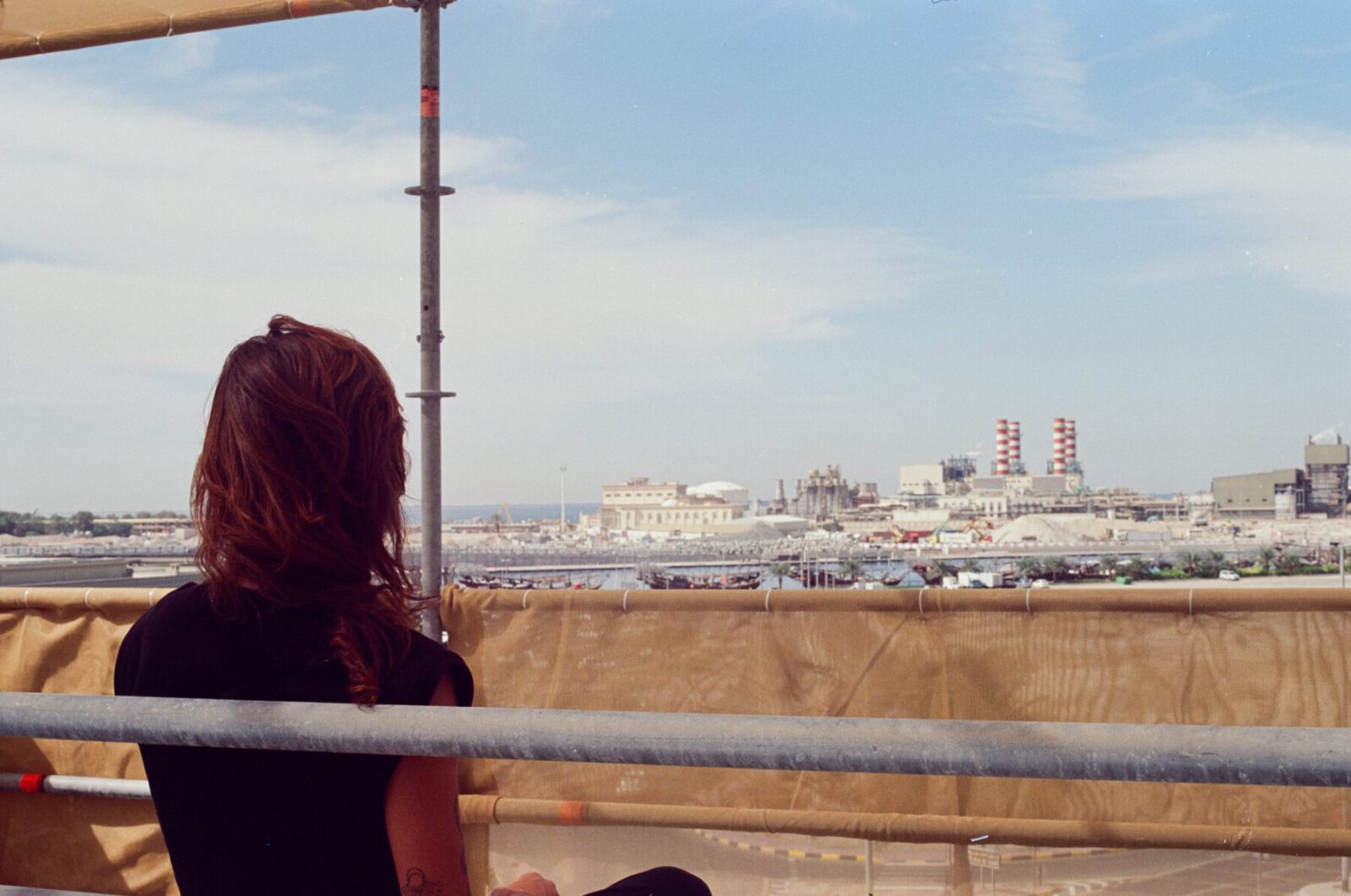
While the old market was designed based on passive thermal conditioning principles, the architecture of the new market results from the use of artificial climate control as a starting point.
Face to face, the two architectures evoke reflections on the spatial transformations that have shaped Sharjah in recent decades.
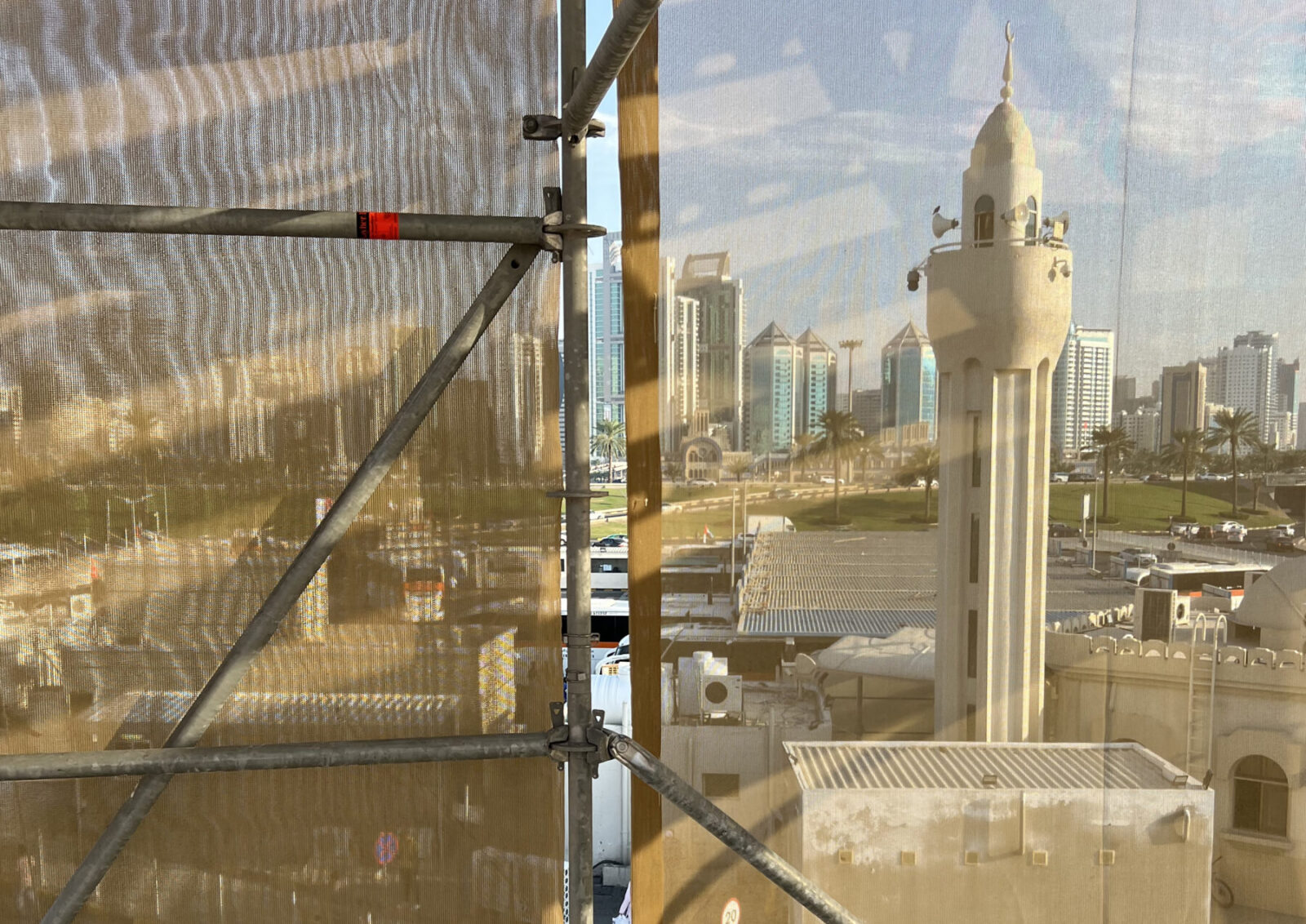
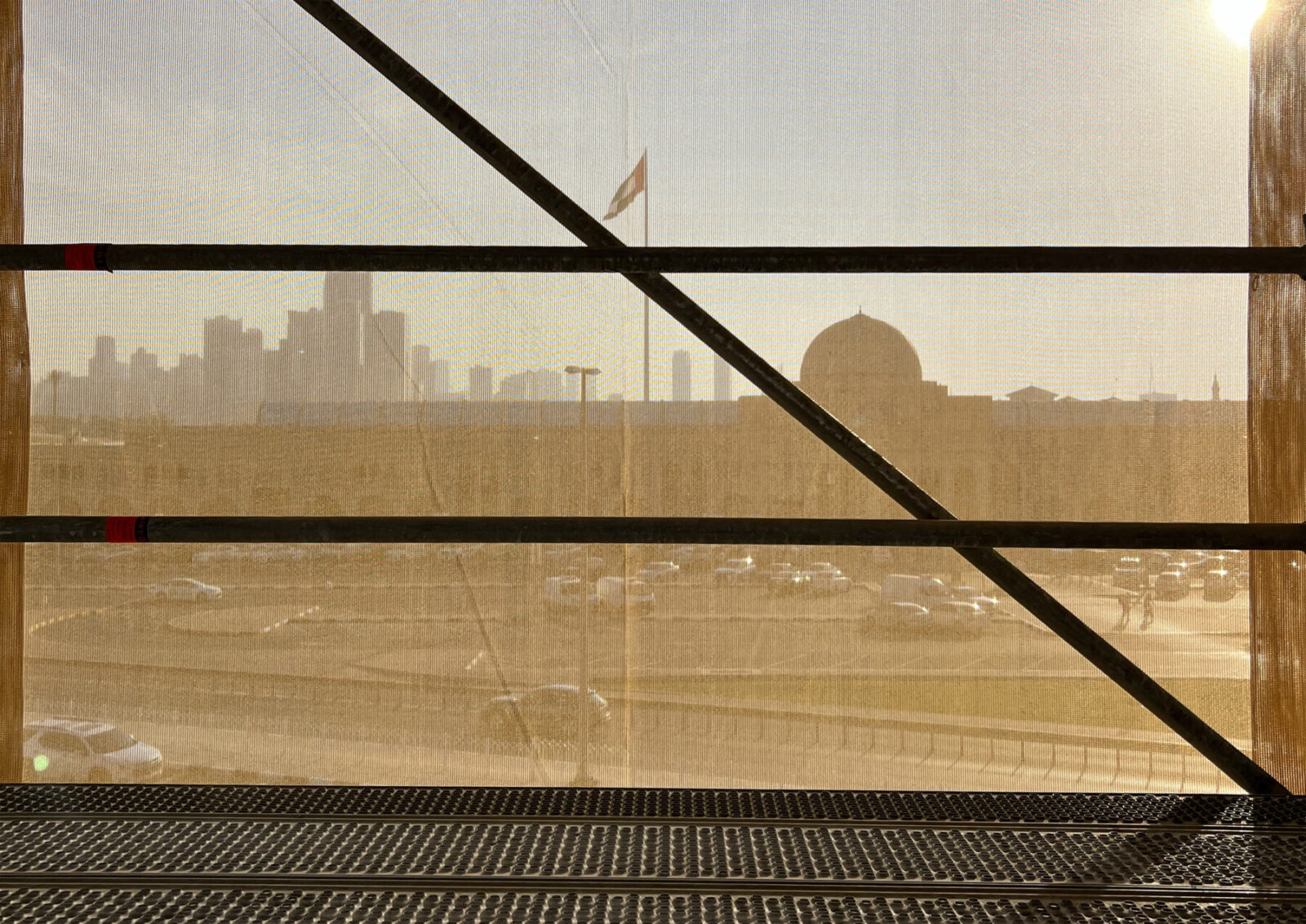
The installation’s formal reference is the ancient wind towers—a vernacular architectural technology for cooling buildings—symbolizing a breath of fresh air for the recently abandoned and now reoccupied market.
The vertical element in a region with lower-rise buildings serves to highlight the presence of the old market in the urban landscape.
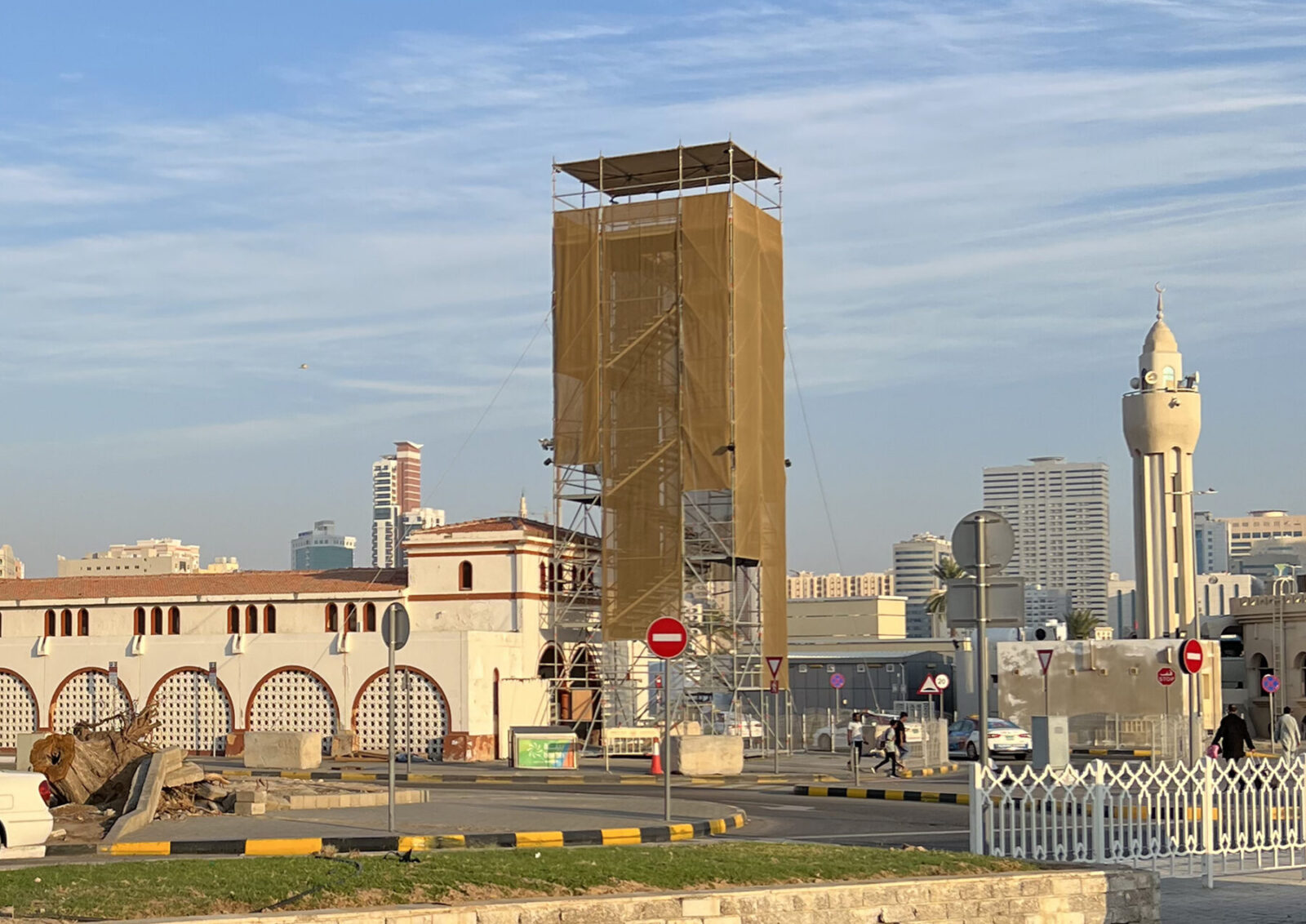
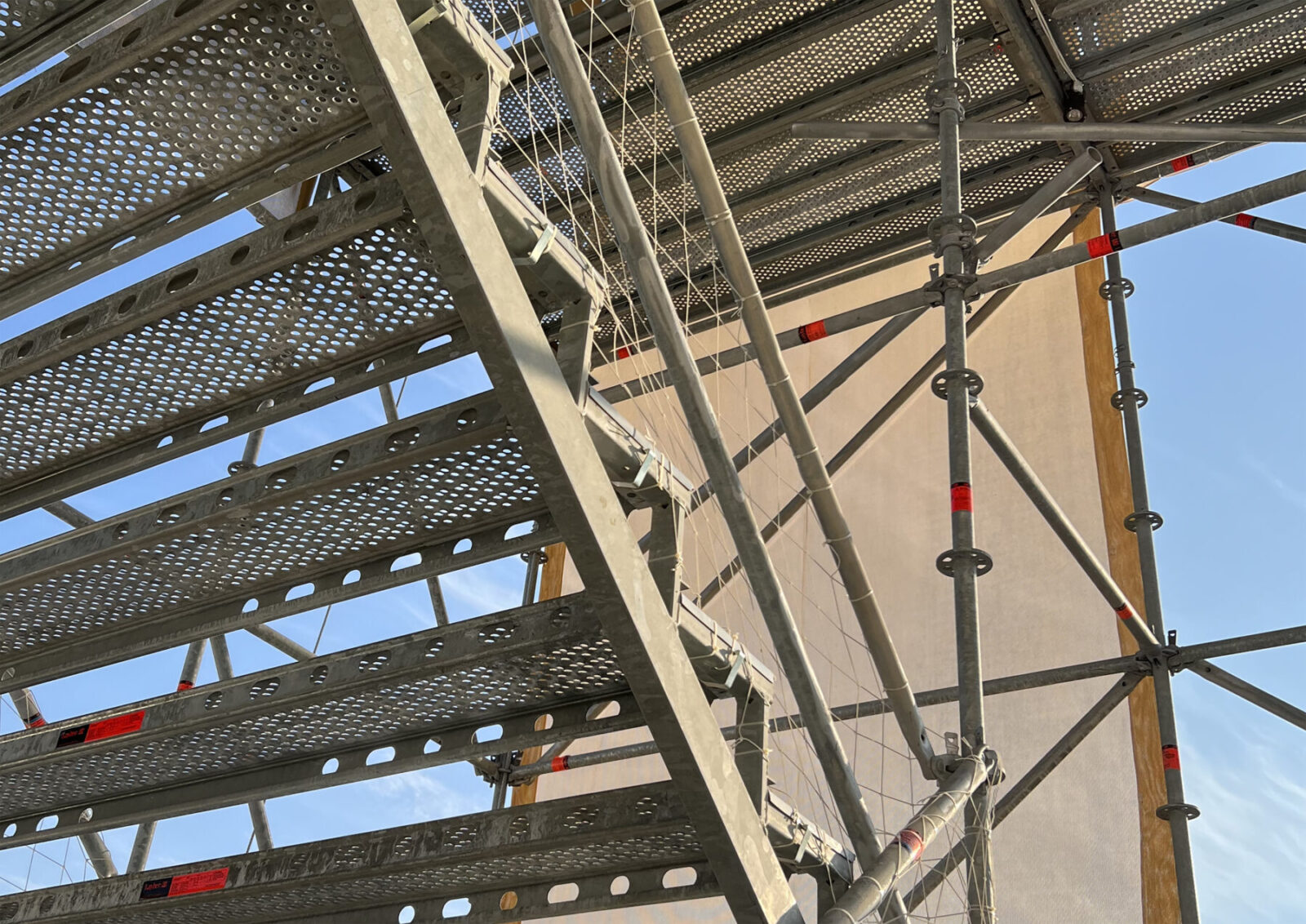
The decision to use a scaffolding system was made due to its quick assembly/disassembly and the almost endless possibility of reuse after the Triennial’s conclusion, avoiding the generation of waste common to major architectural events.
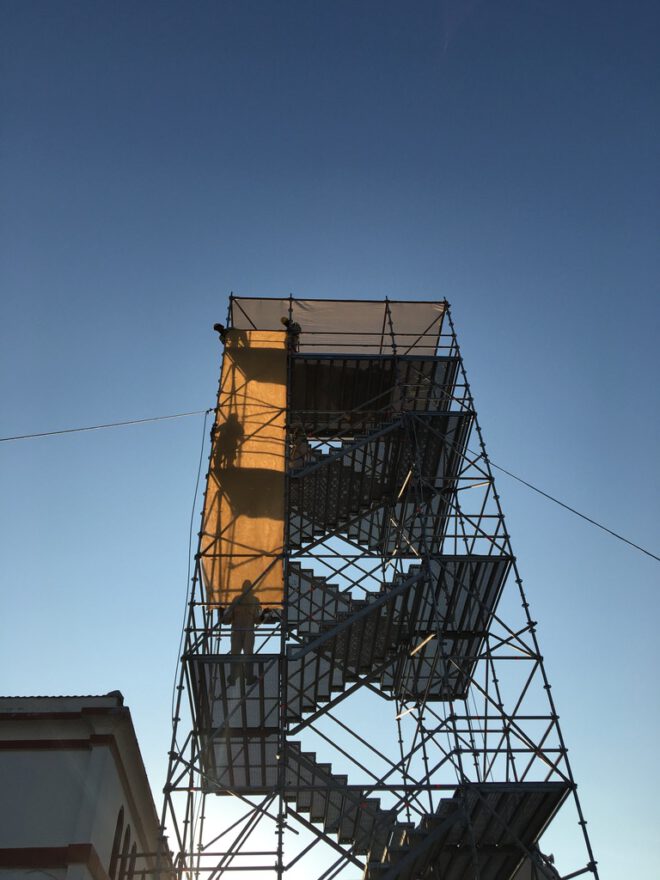
Demolition waste blocks were incorporated into the structure as counterweights. At night, these blocks stand out due to the lighting, provocatively elevating them to the status of archaeological artifacts from a non-linear time.
The structure is partially covered by a shading screen, suggesting an architecture still in (and constantly in) construction. The screen overlays the landscape perceived by the visitor while traversing the installation, ensuring greater thermal comfort during the day.
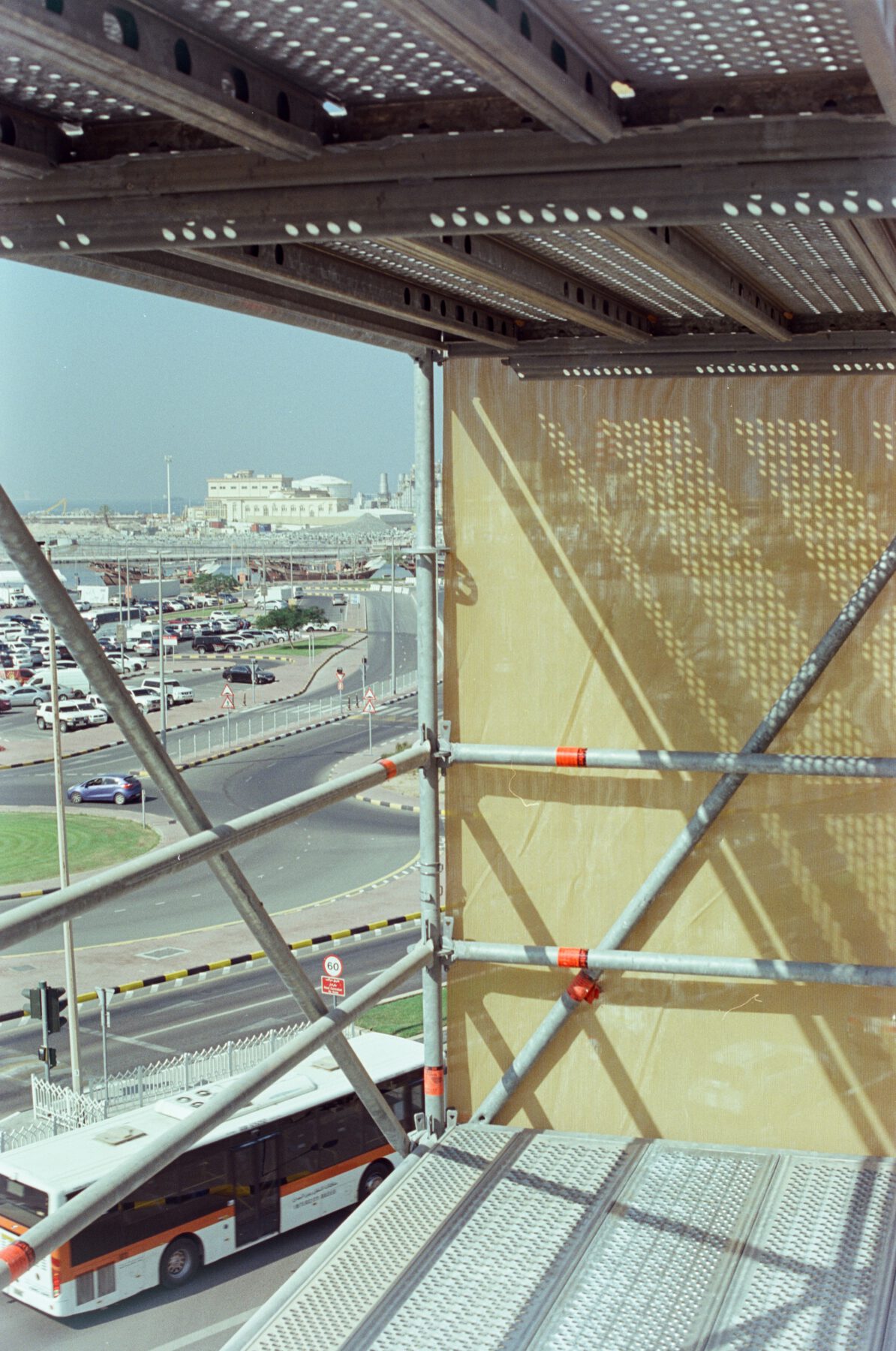
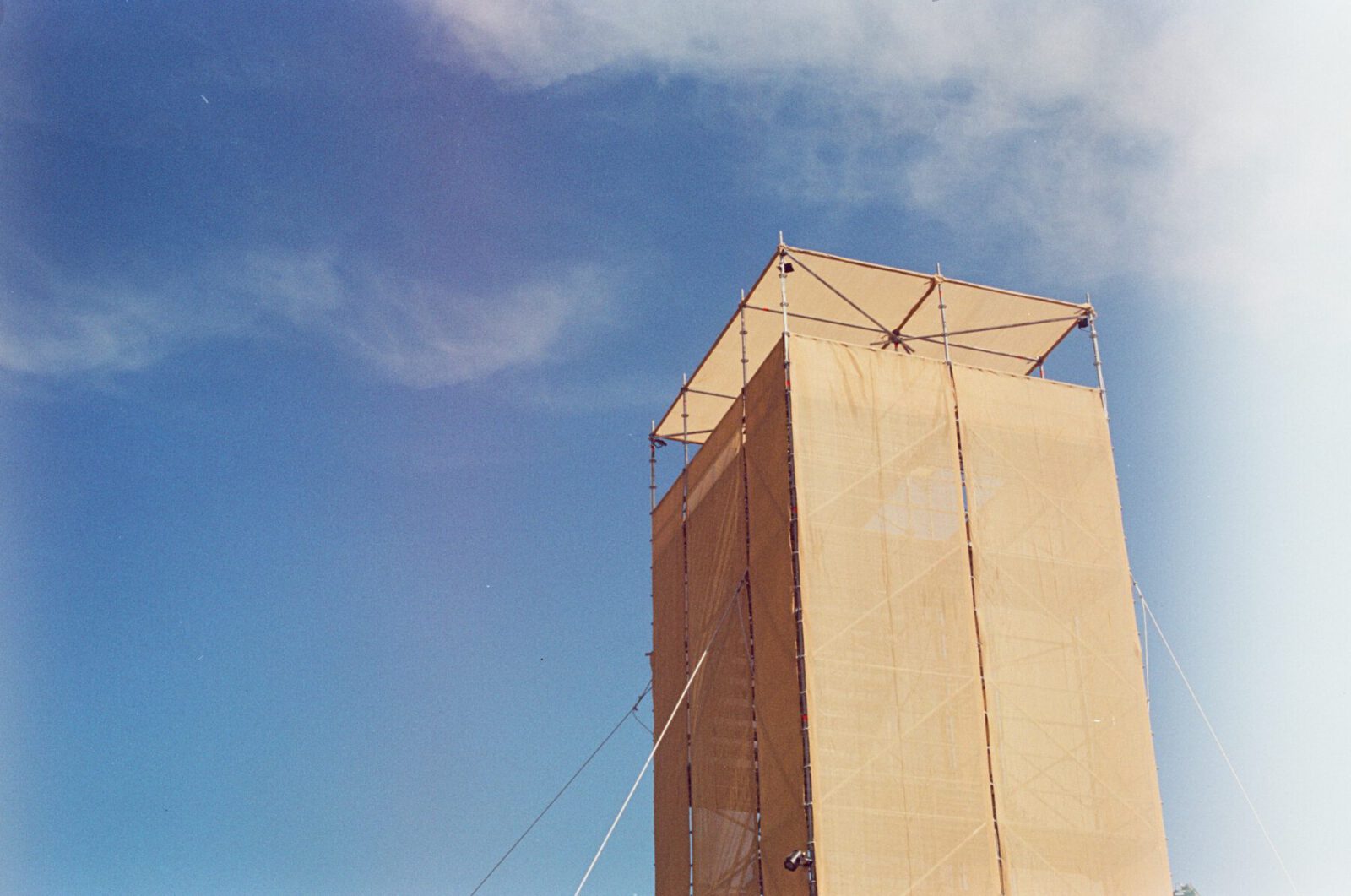
“Time Transitions” explores impermanence and the need for adaptation but also invites reflection on the meaning of a regenerative architecture that values cultural traditions and promotes policies for the reintegration of abandoned urban spaces into the city fabric.
Through these reflections, alternative epistemologies for architecture are envisioned, based on the idea that material and immaterial ruins play a fundamental role in rethinking possible futures in a dystopian present.
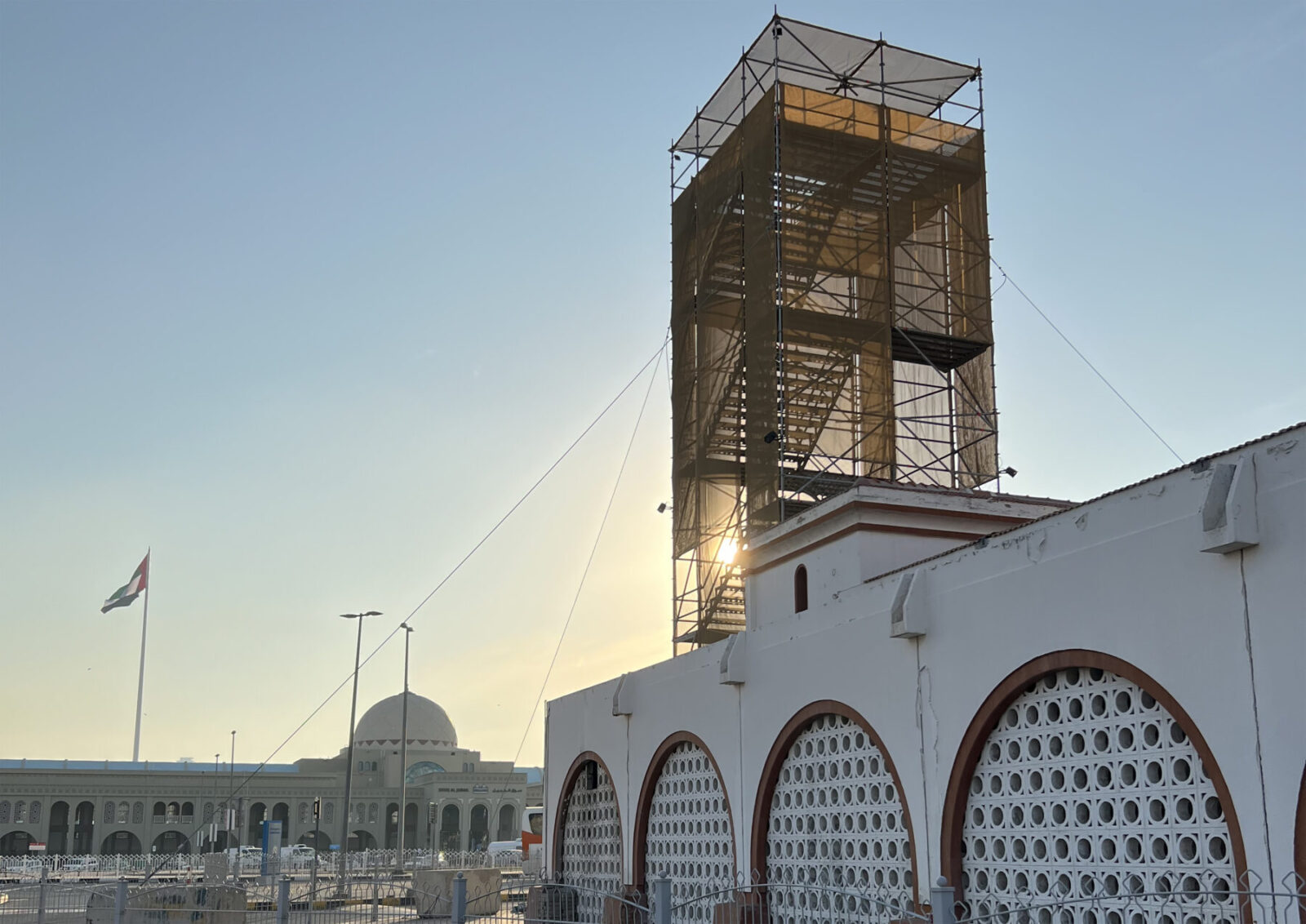
Historical Photos
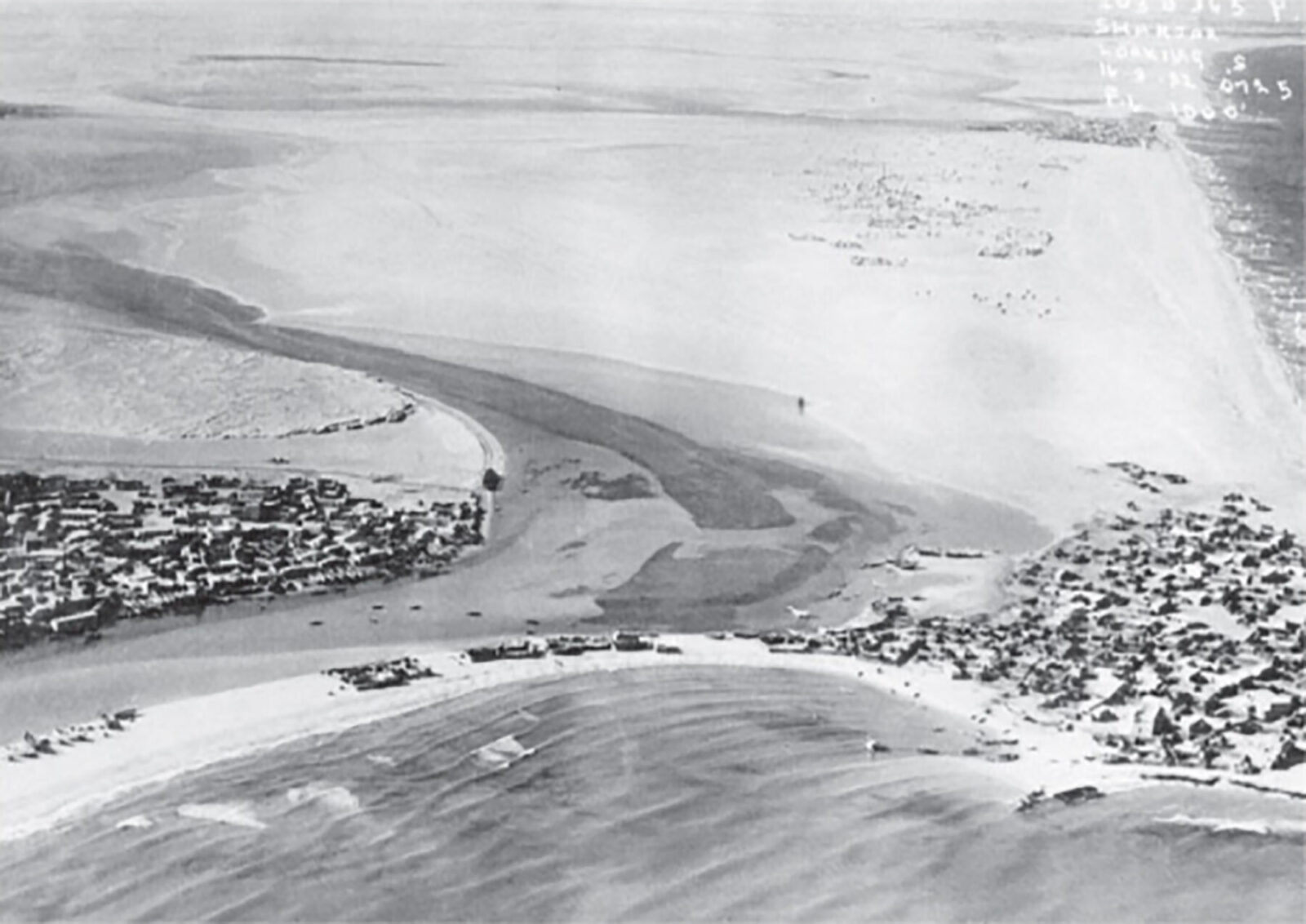
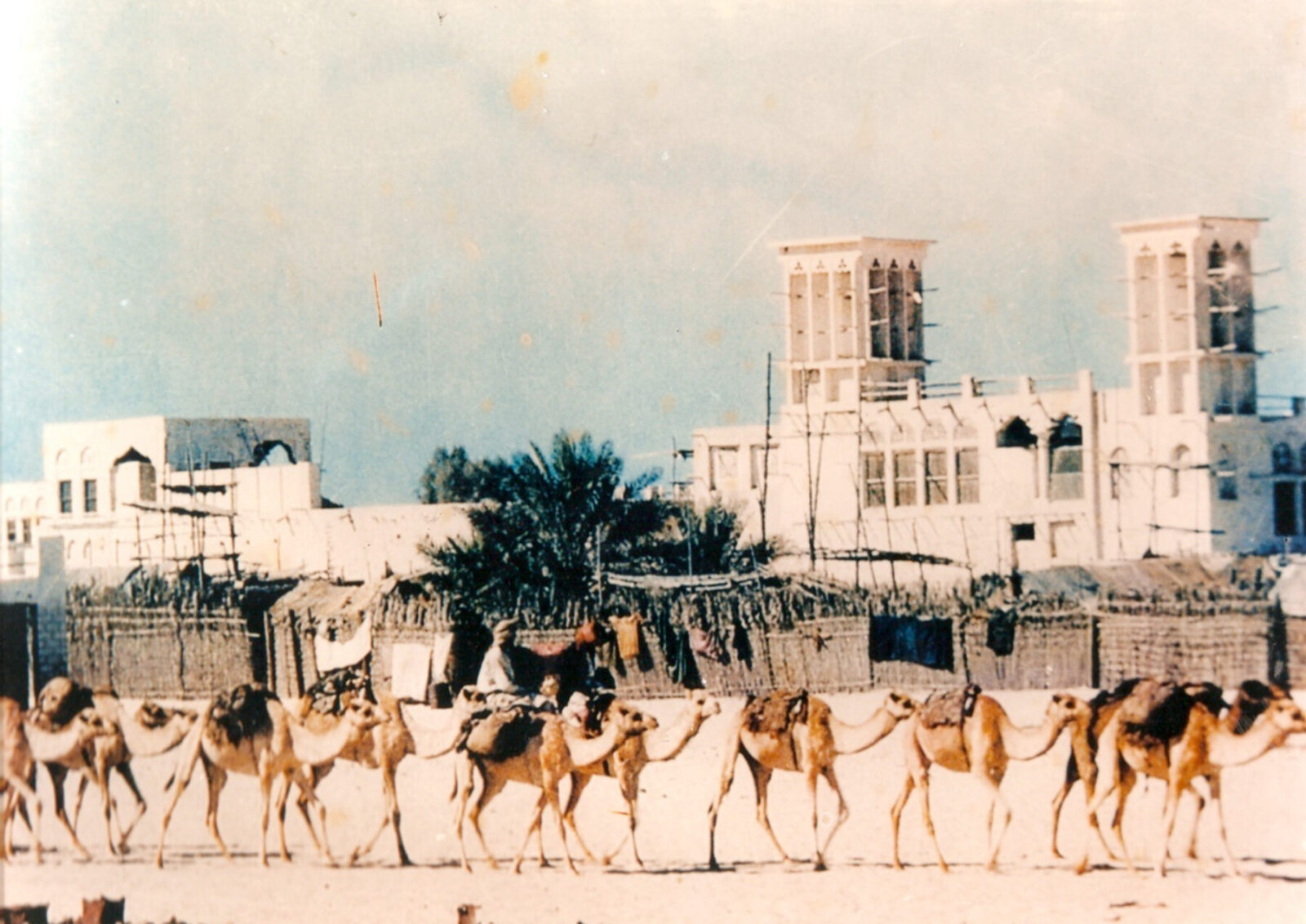
Drawings
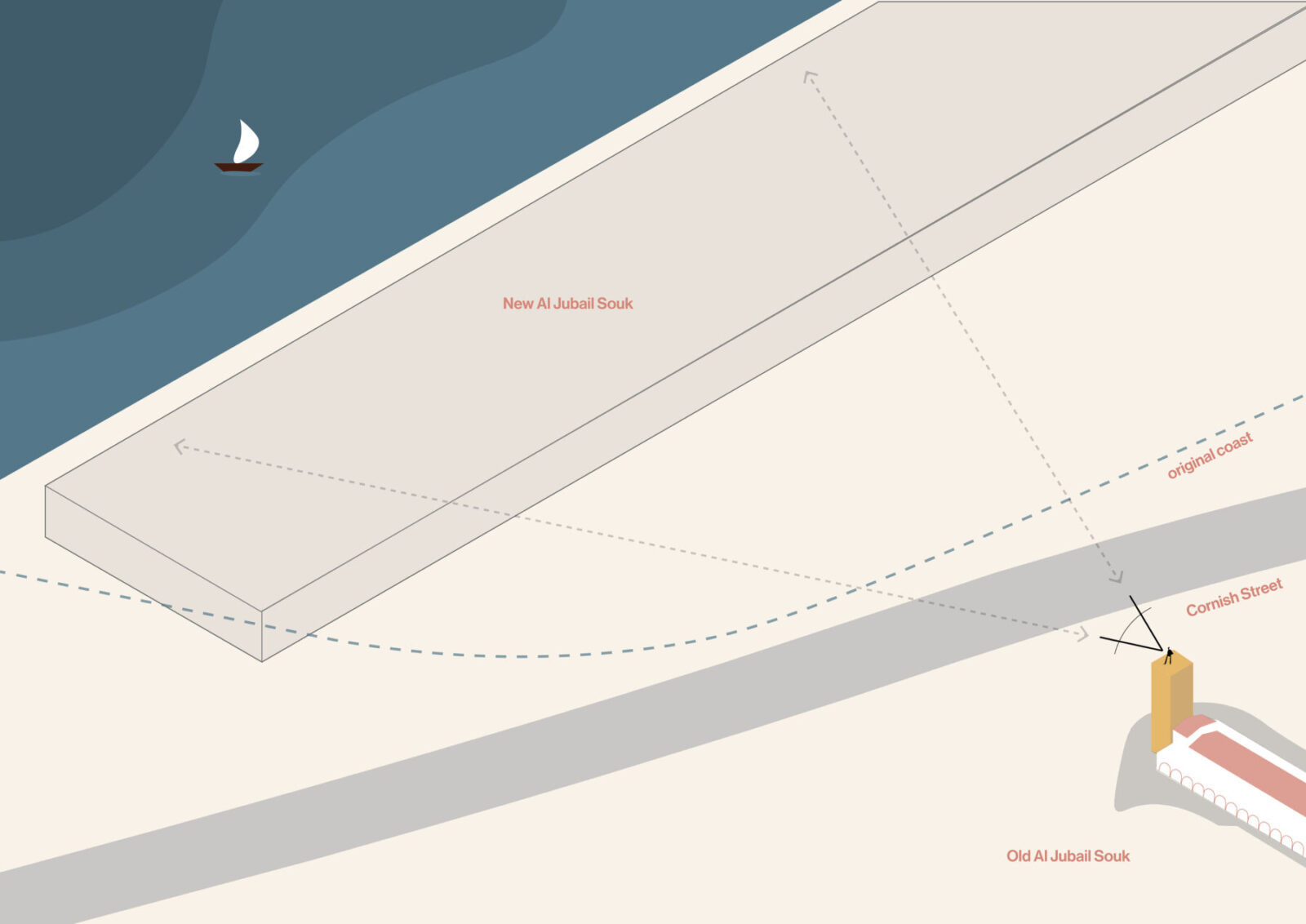

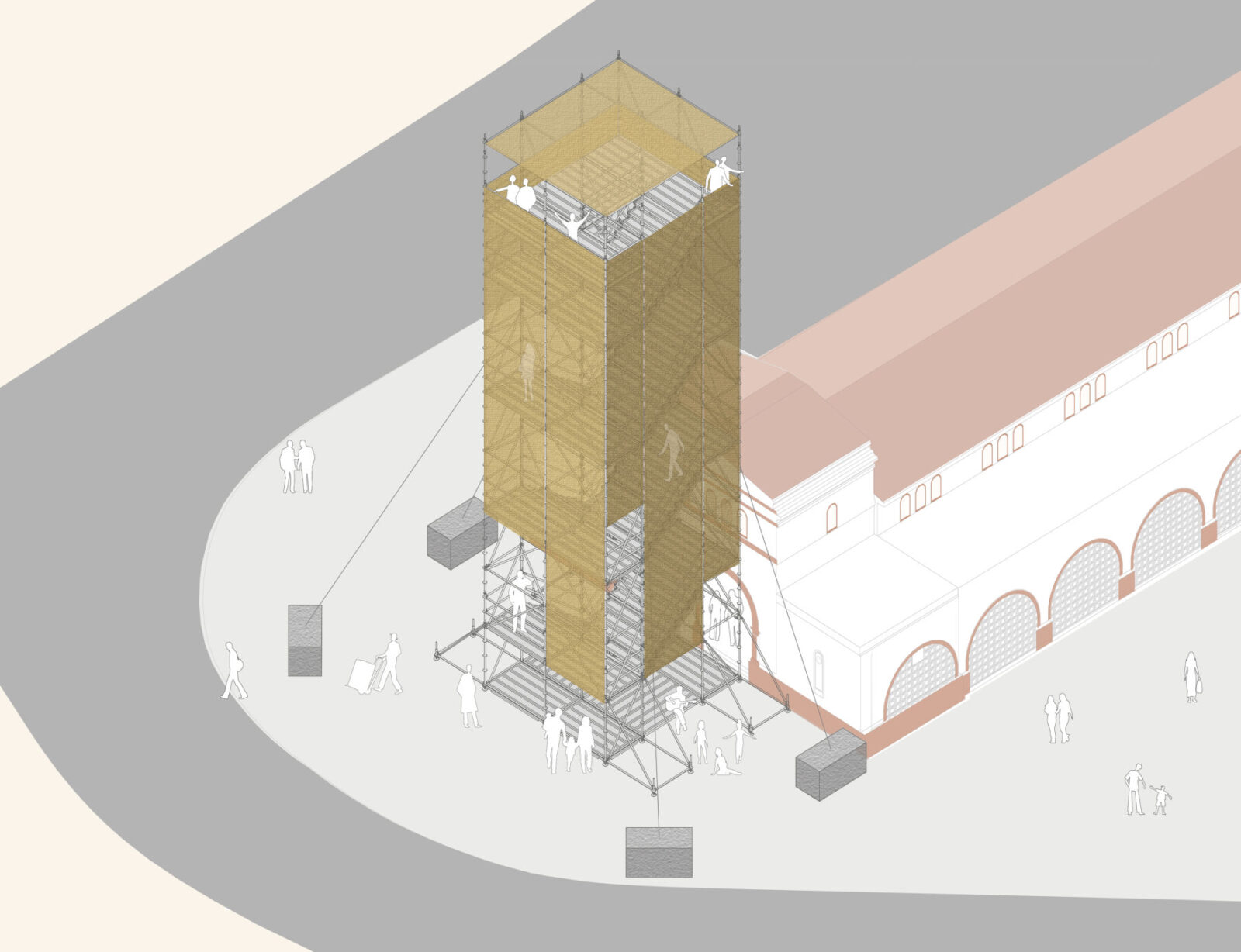
RUÍNA is a brazilian studio that develops architecture, exhibition projects, furniture and consulting projects focused on the reuse of materials and construction waste. The studio values the process as a source of observed knowledge for an increasingly coherent practice and experimentation as a fundamental method for establishing other ways of inhabiting the world. RUÍNA develops projects at different scales – from the building to the component -, from a close look at the local context and its inherent material-immaterial potential. Complementing the design practice, the studio investigates ways of appropriating the processes of construction, demolition and reuse of materials from activities and educational platforms.
Facts & Credits
Title Time Transitions
Typology Architecture, Installation
Location Sharjah, United Arab Emirates
Status Completed, 2023
Architecture RUÍNA Architecture
Curation Tosin Oshinowo
Photography RUÍNA Architecture & Miguel-Falci
Text by the authors
READ ALSO: Bageecha Farmhouse | by The Melange Studio